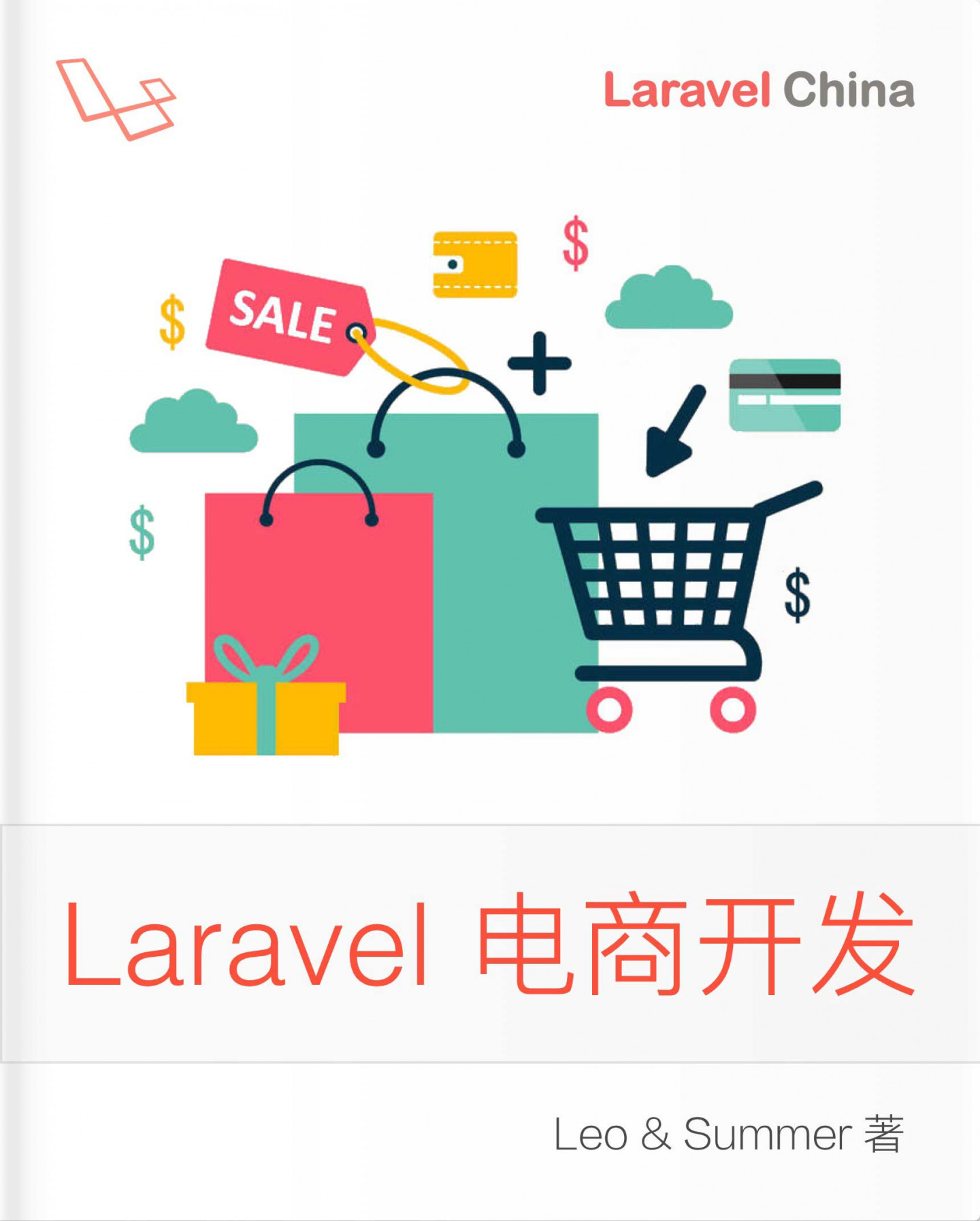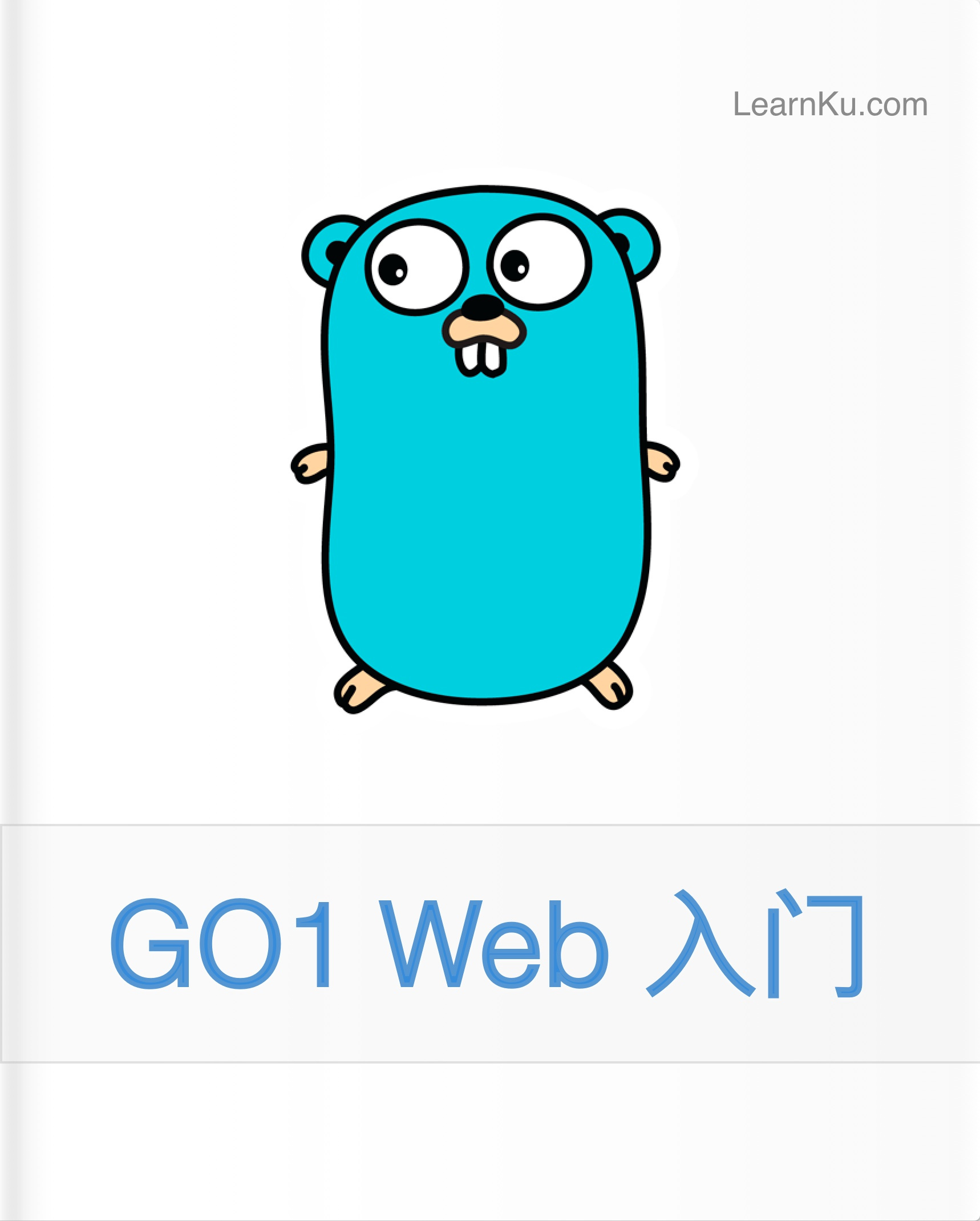集合
集合
简介
Illuminate\Support\Collection 类提供了一个更具可读性的、更便于处理数组数据的封装。具体例子看下面的代码。我们使用 collect 函数从数组中创建新的集合实例,对其中的每个元素执行 strtoupper 函数之后再移除所有的空元素:
$collection = collect(['taylor', 'abigail', null])->map(function ($name) {
return strtoupper($name);
})
->reject(function ($name) {
return empty($name);
});正如你所见, Collection 类允许你链式调用其它方法,以达到在底层数组上优雅的执行 map 和 reject 操作。 通常,集合是不可改变的,这意味着每个 Collection 方法都会返回一个新的 Collection 实例。
创建集合
如上所述, 辅助函数 collect 会为指定的数组返回一个新的 Illuminate\Support\Collection 实例。所以,我们可以这样轻松的创建一个集合:
$collection = collect([1, 2, 3]);{tip} 通常, Eloquent 查询的结果返回的内容都是
Collection实例。
扩展集合
集合都是 宏观的 ,它允许您在执行时将其他方法添加到 Collection 类。 例如 ,通过下面的代码在 Collection 类中添加 一个 toUpper 方法:
use Illuminate\Support\Str;
Collection::macro('toUpper', function () {
return $this->map(function ($value) {
return Str::upper($value);
});
});
$collection = collect(['first', 'second']);
$upper = $collection->toUpper();
// ['FIRST', 'SECOND']通常,你应该在 服务提供者 内声明集合宏。
可用方法
接下来的文档内容, 我们会探讨 Collection 类的每个方法。 记住,所有方法都可以通过链式访问的形式优雅的操作数组。而且,几乎所有的方法都会返回一个新的 Collection 实例,允许你在必要时保存集合的原始副本:
all
average
avg
chunk
collapse
combine
concat
contains
containsStrict
count
crossJoin
dd
diff
diffAssoc
diffKeys
dump
each
eachSpread
every
except
filter
first
firstWhere
flatMap
flatten
flip
forget
forPage
get
groupBy
has
implode
intersect
intersectByKeys
isEmpty
isNotEmpty
keyBy
keys
last
macro
make
map
mapInto
mapSpread
mapToGroups
mapWithKeys
max
median
merge
min
mode
nth
only
pad
partition
pipe
pluck
pop
prepend
pull
push
put
random
reduce
reject
reverse
search
shift
shuffle
slice
sort
sortBy
sortByDesc
sortKeys
sortKeysDesc
splice
split
sum
take
tap
times
toArray
toJson
transform
union
unique
uniqueStrict
unless
unlessEmpty
unlessNotEmpty
unwrap
values
when
whenEmpty
whenNotEmpty
where
whereStrict
whereIn
whereInStrict
whereInstanceOf
whereNotIn
whereNotInStrict
wrap
zip
方法列表
all()
all 方法返回该集合表示的底层数组:
collect([1, 2, 3])->all();
// [1, 2, 3]average()
avg 方法的别名。
avg()
avg 方法返回给定的 平均值 :
$average = collect([['foo' => 10], ['foo' => 10], ['foo' => 20], ['foo' => 40]])->avg('foo');
// 20
$average = collect([1, 1, 2, 4])->avg();
// 2chunk()
chunk 方法将集合拆成多个指定大小的小集合:
$collection = collect([1, 2, 3, 4, 5, 6, 7]);
$chunks = $collection->chunk(4);
$chunks->toArray();
// [[1, 2, 3, 4], [5, 6, 7]]这个方法在使用网格系统的 视图 中特别适用,例如 Bootstrap。想像你有一个 Eloquent 模型的集合要在网格中显示:
@foreach ($products->chunk(3) as $chunk)
<div class="row">
@foreach ($chunk as $product)
<div class="col-xs-4">{{ $product->name }}</div>
@endforeach
</div>
@endforeachcollapse()
collapse 方法将多个数组的集合合并成一个数组的集合:
$collection = collect([[1, 2, 3], [4, 5, 6], [7, 8, 9]]);
$collapsed = $collection->collapse();
$collapsed->all();
// [1, 2, 3, 4, 5, 6, 7, 8, 9]combine()
combine 方法可以将一个集合的值作为「键」,再将另一个数组或者集合的值作为「值」合并成一个集合:
$collection = collect(['name', 'age']);
$combined = $collection->combine(['George', 29]);
$combined->all();
// ['name' => 'George', 'age' => 29]concat()
concat 方法将给定的数组或集合值附加到集合的末尾:
$collection = collect(['John Doe']);
$concatenated = $collection->concat(['Jane Doe'])->concat(['name' => 'Johnny Doe']);
$concatenated->all();
// ['John Doe', 'Jane Doe', 'Johnny Doe']contains()
contains 方法判断集合是否包含给定的项目:
$collection = collect(['name' => 'Desk', 'price' => 100]);
$collection->contains('Desk');
// true
$collection->contains('New York');
// false你也可以用 contains 方法匹配一对键 / 值,即判断给定的配对是否存在于集合中:
$collection = collect([
['product' => 'Desk', 'price' => 200],
['product' => 'Chair', 'price' => 100],
]);
$collection->contains('product', 'Bookcase');
// false最后,你也可以传递一个回调到 contains 方法来执行自己的真实测试:
$collection = collect([1, 2, 3, 4, 5]);
$collection->contains(function ($value, $key) {
return $value > 5;
});
// falsecontains 方法在检查项目值时使用「宽松」比较,意味着具有整数值的字符串将被视为等于相同值的整数。 相反 containsStrict 方法则是使用「严格」比较进行过滤。
containsStrict()
此方法和 contains 方法类似,但是它却是使用了「严格」比较来比较所有值。
count()
count 方法返回该集合内的项目总数:
$collection = collect([1, 2, 3, 4]);
$collection->count();
// 4crossJoin()
crossJoin 方法交叉连接给定数组或集合的值,返回所有可能排列的笛卡尔积:
$collection = collect([1, 2]);
$matrix = $collection->crossJoin(['a', 'b']);
$matrix->all();
/*
[
[1, 'a'],
[1, 'b'],
[2, 'a'],
[2, 'b'],
]
*/
$collection = collect([1, 2]);
$matrix = $collection->crossJoin(['a', 'b'], ['I', 'II']);
$matrix->all();
/*
[
[1, 'a', 'I'],
[1, 'a', 'II'],
[1, 'b', 'I'],
[1, 'b', 'II'],
[2, 'a', 'I'],
[2, 'a', 'II'],
[2, 'b', 'I'],
[2, 'b', 'II'],
]
*/dd()
dd 方法打印集合的项目并结束脚本执行:
$collection = collect(['John Doe', 'Jane Doe']);
$collection->dd();
/*
Collection {
#items: array:2 [
0 => "John Doe"
1 => "Jane Doe"
]
}
*/如果你不想终止脚本执行,请使用用 dump 方法代替。
diff()
diff 方法将集合与其它集合或纯 PHP 数组进行值的比较,然后返回原集合中存在而给定集合中不存在的值:
$collection = collect([1, 2, 3, 4, 5]);
$diff = $collection->diff([2, 4, 6, 8]);
$diff->all();
// [1, 3, 5]diffAssoc()
diffAssoc 该方法与另外一个集合或基于它的键和值的 PHP 数组进行比较。这个方法会返回原集合不存在于给定集合中的键值对:
$collection = collect([
'color' => 'orange',
'type' => 'fruit',
'remain' => 6
]);
$diff = $collection->diffAssoc([
'color' => 'yellow',
'type' => 'fruit',
'remain' => 3,
'used' => 6
]);
$diff->all();
// ['color' => 'orange', 'remain' => 6]diffKeys()
diffKeys 方法与另外一个集合或 PHP 数组的「键」进行比较,然后返回原集合中存在而给定的集合中不存在「键」所对应的键值对:
$collection = collect([
'one' => 10,
'two' => 20,
'three' => 30,
'four' => 40,
'five' => 50,
]);
$diff = $collection->diffKeys([
'two' => 2,
'four' => 4,
'six' => 6,
'eight' => 8,
]);
$diff->all();
// ['one' => 10, 'three' => 30, 'five' => 50]dump()
dump 方法打印集合的项目:
$collection = collect(['John Doe', 'Jane Doe']);
$collection->dump();
/*
Collection {
#items: array:2 [
0 => "John Doe"
1 => "Jane Doe"
]
}
*/如果要在打印集合后终止脚本执行,请使用 dd 方法代替。
each()
each 迭代集合中的内容并将其传递到回调函数中:
$collection->each(function ($item, $key) {
//
});如果你想要中断对内容的迭代,那就从回调中返回 false:
$collection->each(function ($item, $key) {
if (/* some condition */) {
return false;
}
});eachSpread()
eachSpread 方法迭代集合的项目,将每个嵌套项目的值传递给回调:
$collection = collect([['John Doe', 35], ['Jane Doe', 33]]);
$collection->eachSpread(function ($name, $age) {
//
});你可以通过在回调中返回 false 来终止迭代。
$collection->eachSpread(function ($name, $age) {
return false;
});every()
every 方法可用于验证集合中每一个元素都通过给定的真实测试:
collect([1, 2, 3, 4])->every(function ($value, $key) {
return $value > 2;
});
// falseexcept()
except 方法返回集合中除了指定键以外的所有项目:
$collection = collect(['product_id' => 1, 'price' => 100, 'discount' => false]);
$filtered = $collection->except(['price', 'discount']);
$filtered->all();
// ['product_id' => 1]与 except 相反的方法,请查看 only。
filter()
filter 方法使用给定的回调函数过滤集合的内容,只留下那些通过给定真实测试的内容:
$collection = collect([1, 2, 3, 4]);
$filtered = $collection->filter(function ($value, $key) {
return $value > 2;
});
$filtered->all();
// [3, 4]如果没有提供回调函数,集合中所有返回 false 的元素都会被移除:
$collection = collect([1, 2, 3, null, false, '', 0, []]);
$collection->filter()->all();
// [1, 2, 3]与filter 相反的方法,可以查看 reject。
first()
first 方法返回集合中通过给定真实测试的第一个元素:
collect([1, 2, 3, 4])->first(function ($value, $key) {
return $value > 2;
});
// 3你也可以不传入参数使用 first 方法以获取集合中第一个元素。如果集合是空的,则会返回 null:
collect([1, 2, 3, 4])->first();
// 1firstWhere()
firstWhere 方法返回集合中具有给定键 / 值对第一个元素:
$collection = collect([
['name' => 'Regena', 'age' => 12],
['name' => 'Linda', 'age' => 14],
['name' => 'Diego', 'age' => 23],
['name' => 'Linda', 'age' => 84],
]);
$collection->firstWhere('name', 'Linda');
// ['name' => 'Linda', 'age' => 14]调用 firstWhere 方法的时候,你还可以使用运算符。
$collection->firstWhere('age', '>=', 18);
// ['name' => 'Diego', 'age' => 23]flatMap()
flatMap 方法遍历集合并将其中的每个值传递到给定的回调。可以通过回调修改每个值的内容再返回出来,从而形成一个新的被修改过内容的集合。然后再次被合并为一个数组的集合:
$collection = collect([
['name' => 'Sally'],
['school' => 'Arkansas'],
['age' => 28]
]);
$flattened = $collection->flatMap(function ($values) {
return array_map('strtoupper', $values);
});
$flattened->all();
// ['name' => 'SALLY', 'school' => 'ARKANSAS', 'age' => '28'];flatten()
flatten 方法将多维集合转为一维的:
$collection = collect(['name' => 'taylor', 'languages' => ['php', 'javascript']]);
$flattened = $collection->flatten();
$flattened->all();
// ['taylor', 'php', 'javascript'];你还可以选择性地传入「深度」参数:
$collection = collect([
'Apple' => [
['name' => 'iPhone 6S', 'brand' => 'Apple'],
],
'Samsung' => [
['name' => 'Galaxy S7', 'brand' => 'Samsung']
],
]);
$products = $collection->flatten(1);
$products->values()->all();
/*
[
['name' => 'iPhone 6S', 'brand' => 'Apple'],
['name' => 'Galaxy S7', 'brand' => 'Samsung'],
]
*/在这个例子里,调用 flatten 方法时不传入深度参数的话也会将嵌套数组转成一维的,然后返回 ['iPhone 6S', 'Apple', 'Galaxy S7', 'Samsung']。传入深度参数能让你限制设置返回数组的层数。
flip()
flip 方法将集合中的键和对应的数值进行互换:
$collection = collect(['name' => 'taylor', 'framework' => 'laravel']);
$flipped = $collection->flip();
$flipped->all();
// ['taylor' => 'name', 'laravel' => 'framework']forget()
forget 方法通过给定的键来移除掉集合中对应的内容:
$collection = collect(['name' => 'taylor', 'framework' => 'laravel']);
$collection->forget('name');
$collection->all();
// ['framework' => 'laravel']{note} 与大多数集合的方法不同,
forget不会返回修改过后的新集合;它会直接修改原来的集合。
forPage()
forPage 方法返回给定页码上显示的项目的新集合。这个方法接受页码作为其第一个参数和每页显示的项目数作为其第二个参数。
$collection = collect([1, 2, 3, 4, 5, 6, 7, 8, 9]);
$chunk = $collection->forPage(2, 3);
$chunk->all();
// [4, 5, 6]get()
get 方法返回给定键的项目。如果该键不存在,则返回 null:
$collection = collect(['name' => 'taylor', 'framework' => 'laravel']);
$value = $collection->get('name');
// taylor你可以选择性地传递默认值作为第二个参数:
$collection = collect(['name' => 'taylor', 'framework' => 'laravel']);
$value = $collection->get('foo', 'default-value');
// default-value你甚至可以将回调函数当作默认值。如果指定的键不存在,就会返回回调的结果:
$collection->get('email', function () {
return 'default-value';
});
// default-valuegroupBy()
groupBy 方法根据给定的键对集合内的项目进行分组:
$collection = collect([
['account_id' => 'account-x10', 'product' => 'Chair'],
['account_id' => 'account-x10', 'product' => 'Bookcase'],
['account_id' => 'account-x11', 'product' => 'Desk'],
]);
$grouped = $collection->groupBy('account_id');
$grouped->toArray();
/*
[
'account-x10' => [
['account_id' => 'account-x10', 'product' => 'Chair'],
['account_id' => 'account-x10', 'product' => 'Bookcase'],
],
'account-x11' => [
['account_id' => 'account-x11', 'product' => 'Desk'],
],
]
*/除了传入一个字符串的「键」,你还可以传入一个回调。该回调应该返回你希望用来分组的键的值。
$grouped = $collection->groupBy(function ($item, $key) {
return substr($item['account_id'], -3);
});
$grouped->toArray();
/*
[
'x10' => [
['account_id' => 'account-x10', 'product' => 'Chair'],
['account_id' => 'account-x10', 'product' => 'Bookcase'],
],
'x11' => [
['account_id' => 'account-x11', 'product' => 'Desk'],
],
]
*/多个分组标准可以作为数组传递。每个数组元素将应用于多维数组的对应级别:
$data = new Collection([
10 => ['user' => 1, 'skill' => 1, 'roles' => ['Role_1', 'Role_3']],
20 => ['user' => 2, 'skill' => 1, 'roles' => ['Role_1', 'Role_2']],
30 => ['user' => 3, 'skill' => 2, 'roles' => ['Role_1']],
40 => ['user' => 4, 'skill' => 2, 'roles' => ['Role_2']],
]);
$result = $data->groupBy([
'skill',
function ($item) {
return $item['roles'];
},
], $preserveKeys = true);
/*
[
1 => [
'Role_1' => [
10 => ['user' => 1, 'skill' => 1, 'roles' => ['Role_1', 'Role_3']],
20 => ['user' => 2, 'skill' => 1, 'roles' => ['Role_1', 'Role_2']],
],
'Role_2' => [
20 => ['user' => 2, 'skill' => 1, 'roles' => ['Role_1', 'Role_2']],
],
'Role_3' => [
10 => ['user' => 1, 'skill' => 1, 'roles' => ['Role_1', 'Role_3']],
],
],
2 => [
'Role_1' => [
30 => ['user' => 3, 'skill' => 2, 'roles' => ['Role_1']],
],
'Role_2' => [
40 => ['user' => 4, 'skill' => 2, 'roles' => ['Role_2']],
],
],
];
*/has()
has 方法判断集合中是否存在给定的键:
$collection = collect(['account_id' => 1, 'product' => 'Desk']);
$collection->has('product');
// trueimplode()
implode 方法合并集合中的项目。其参数取决于集合中项目的类型。如果集合包含数组或对象,你应该传入你希望连接的属性的键,以及你希望放在值之间用来「拼接」的字符串:
$collection = collect([
['account_id' => 1, 'product' => 'Desk'],
['account_id' => 2, 'product' => 'Chair'],
]);
$collection->implode('product', ', ');
// Desk, Chair如果集合包含简单的字符串或数值,只需要传入「拼接」用的字符串作为该方法的唯一参数即可:
collect([1, 2, 3, 4, 5])->implode('-');
// '1-2-3-4-5'intersect()
intersect 方法从原集合中删除不在给定「数组」或集合中的任何值。最终的集合会保留原集合的键:
$collection = collect(['Desk', 'Sofa', 'Chair']);
$intersect = $collection->intersect(['Desk', 'Chair', 'Bookcase']);
$intersect->all();
// [0 => 'Desk', 2 => 'Chair']intersectByKeys()
intersectByKeys 方法删除原集合中不存在于给定「数组」或集合中的任何键:
$collection = collect([
'serial' => 'UX301', 'type' => 'screen', 'year' => 2009
]);
$intersect = $collection->intersectByKeys([
'reference' => 'UX404', 'type' => 'tab', 'year' => 2011
]);
$intersect->all();
// ['type' => 'screen', 'year' => 2009]isEmpty()
如果集合是空的,isEmpty 方法返回 true,否则返回 false:
collect([])->isEmpty();
// trueisNotEmpty()
如果集合不是空的, isNotEmpty 方法会返回 true;否则返回 false :
collect([])->isNotEmpty();
// falsekeyBy()
keyBy 方法以给定的键作为集合的键。如果多个项目具有相同的键, 则只有最后一个项目回显示在新集合中:
$collection = collect([
['product_id' => 'prod-100', 'name' => 'Desk'],
['product_id' => 'prod-200', 'name' => 'Chair'],
]);
$keyed = $collection->keyBy('product_id');
$keyed->all();
/*
[
'prod-100' => ['product_id' => 'prod-100', 'name' => 'Desk'],
'prod-200' => ['product_id' => 'prod-200', 'name' => 'Chair'],
]
*/你也可以传入一个回调方法。回调方法返回的值会作为该集合的键:
$keyed = $collection->keyBy(function ($item) {
return strtoupper($item['product_id']);
});
$keyed->all();
/*
[
'PROD-100' => ['product_id' => 'prod-100', 'name' => 'Desk'],
'PROD-200' => ['product_id' => 'prod-200', 'name' => 'Chair'],
]
*/keys()
keys 方法会返回集合的所有键:
$collection = collect([
'prod-100' => ['product_id' => 'prod-100', 'name' => 'Desk'],
'prod-200' => ['product_id' => 'prod-200', 'name' => 'Chair'],
]);
$keys = $collection->keys();
$keys->all();
// ['prod-100', 'prod-200']last()
last 方法返回集合中通过给定真值测试的最后一个元素:
collect([1, 2, 3, 4])->last(function ($value, $key) {
return $value < 3;
});
// 2你也可以不传入参数调用 last 方法来获取集合中最后一个元素。如果集合是空的,则返回 null :
collect([1, 2, 3, 4])->last();
// 4macro()
静态 macro 允许你在运行时将方法添加到 Collection 类中。有关更多信息,请参阅 扩展集合 的文档。
make()
静态 make 可以创建一个新的集合实例。请参阅 创建集合 部分。
map()
map 方法遍历集合并将每一个值传入给定的回调方法。该回调可以任意修改项目并返回,从而形成新的被修改过项目的集合:
$collection = collect([1, 2, 3, 4, 5]);
$multiplied = $collection->map(function ($item, $key) {
return $item * 2;
});
$multiplied->all();
// [2, 4, 6, 8, 10]{note} 像其他大多数集合方法一样,
map方法会返回一个新的集合实例;它不会修改它所调用的集合。如果你想改变原集合,请使用transform方法。
mapInto()
mapInto() 方法可以迭代集合,通过将值传递给构造函数来创建给定类的新实例:
class Currency
{
/**
* 创建新的货币实例
*
* @param string $code
* @return void
*/
function __construct(string $code)
{
$this->code = $code;
}
}
$collection = collect(['USD', 'EUR', 'GBP']);
$currencies = $collection->mapInto(Currency::class);
$currencies->all();
// [Currency('USD'), Currency('EUR'), Currency('GBP')]mapSpread()
mapSpread 方法可以迭代集合的项目,将每个嵌套项目值给给定的回调函数。该回调函数可以自由修改该项目并将其返回,从而形成新的修改过的项目集合:
$collection = collect([0, 1, 2, 3, 4, 5, 6, 7, 8, 9]);
$chunks = $collection->chunk(2);
$sequence = $chunks->mapSpread(function ($odd, $even) {
return $odd + $even;
});
$sequence->all();
// [1, 5, 9, 13, 17]mapToGroups()
mapToGroups 方法通过给定的回调方法对集合的项目进行分组。该回调应该返回一个包含单个键 / 值对的关联数组,从而形成一个新的集合:
$collection = collect([
[
'name' => 'John Doe',
'department' => 'Sales',
],
[
'name' => 'Jane Doe',
'department' => 'Sales',
],
[
'name' => 'Johnny Doe',
'department' => 'Marketing',
]
]);
$grouped = $collection->mapToGroups(function ($item, $key) {
return [$item['department'] => $item['name']];
});
$grouped->toArray();
/*
[
'Sales' => ['John Doe', 'Jane Doe'],
'Marketing' => ['Johhny Doe'],
]
*/
$grouped->get('Sales')->all();
// ['John Doe', 'Jane Doe']mapWithKeys()
mapWithKeys 方法遍历集合并将每个值传给回调。回调会返回一个包含单个键 / 值对的关联数组:
$collection = collect([
[
'name' => 'John',
'department' => 'Sales',
'email' => 'john@example.com'
],
[
'name' => 'Jane',
'department' => 'Marketing',
'email' => 'jane@example.com'
]
]);
$keyed = $collection->mapWithKeys(function ($item) {
return [$item['email'] => $item['name']];
});
$keyed->all();
/*
[
'john@example.com' => 'John',
'jane@example.com' => 'Jane',
]
*/max()
max 方法返回给定键的最大值:
$max = collect([['foo' => 10], ['foo' => 20]])->max('foo');
// 20
$max = collect([1, 2, 3, 4, 5])->max();
// 5median()
median 方法返回给定键的 中值 :
$median = collect([['foo' => 10], ['foo' => 10], ['foo' => 20], ['foo' => 40]])->median('foo');
// 15
$median = collect([1, 1, 2, 4])->median();
// 1.5merge()
merge 方法将合并给定的数组或集合到原集合。如果给定项目中的字符串键与原集合中的字符串键相匹配,给定的项目值将覆盖原集合中的值:
$collection = collect(['product_id' => 1, 'price' => 100]);
$merged = $collection->merge(['price' => 200, 'discount' => false]);
$merged->all();
// ['product_id' => 1, 'price' => 200, 'discount' => false]如果给定的项目的键是数字,这些值将被追加到集合的末尾:
$collection = collect(['Desk', 'Chair']);
$merged = $collection->merge(['Bookcase', 'Door']);
$merged->all();
// ['Desk', 'Chair', 'Bookcase', 'Door']min()
min 方法返回给定键的最小值:
$min = collect([['foo' => 10], ['foo' => 20]])->min('foo');
// 10
$min = collect([1, 2, 3, 4, 5])->min();
// 1mode()
mode 方法返回给定键的 众数 :
$mode = collect([['foo' => 10], ['foo' => 10], ['foo' => 20], ['foo' => 40]])->mode('foo');
// [10]
$mode = collect([1, 1, 2, 4])->mode();
// [1]nth()
nth 方法创建由每隔 n 个元素组成一个的新集合:
$collection = collect(['a', 'b', 'c', 'd', 'e', 'f']);
$collection->nth(4);
// ['a', 'e']你也可以选择传入一个偏移位置作为第二个参数:
$collection->nth(4, 1);
// ['b', 'f']only()
only 方法返回集合中所有给定键的所有项目:
$collection = collect(['product_id' => 1, 'name' => 'Desk', 'price' => 100, 'discount' => false]);
$filtered = $collection->only(['product_id', 'name']);
$filtered->all();
// ['product_id' => 1, 'name' => 'Desk']与 only 相反的方法, 请查看 except 方法。
pad()
pad 方法将使用给定的值填充数组,直到数组达到指定的大小。此方法的行为与 array_pad PHP 函数功能类似。
要填充到左侧,您应指定负号。如果给定大小的绝对值小于或等于数组的长度,则不会发生填充:
$collection = collect(['A', 'B', 'C']);
$filtered = $collection->pad(5, 0);
$filtered->all();
// ['A', 'B', 'C', 0, 0]
$filtered = $collection->pad(-5, 0);
$filtered->all();
// [0, 0, 'A', 'B', 'C']partition()
partition 方法可以和PHP中的 list 方法结合使用,用来分开通过指定条件的元素以及那些不通过指定条件的元素:
$collection = collect([1, 2, 3, 4, 5, 6]);
list($underThree, $aboveThree) = $collection->partition(function ($i) {
return $i < 3;
});
$underThree->all();
// [1, 2]
$aboveThree->all();
// [3, 4, 5, 6]pipe()
pipe 方法将集合传给给定的回调并返回结果:
$collection = collect([1, 2, 3]);
$piped = $collection->pipe(function ($collection) {
return $collection->sum();
});
// 6pluck()
pluck 方法可以获取集合中给定键对应的所有值:
$collection = collect([
['product_id' => 'prod-100', 'name' => 'Desk'],
['product_id' => 'prod-200', 'name' => 'Chair'],
]);
$plucked = $collection->pluck('name');
$plucked->all();
// ['Desk', 'Chair']你也可以通过传入第二个参数来指定生成的集合的键:
$plucked = $collection->pluck('name', 'product_id');
$plucked->all();
// ['prod-100' => 'Desk', 'prod-200' => 'Chair']如果存在重复的键,则最后一个匹配元素将被插入到弹出的集合中:
$collection = collect([
['brand' => 'Tesla', 'color' => 'red'],
['brand' => 'Pagani', 'color' => 'white'],
['brand' => 'Tesla', 'color' => 'black'],
['brand' => 'Pagani', 'color' => 'orange'],
]);
$plucked = $collection->pluck('color', 'brand');
$plucked->all();
// ['Tesla' => 'black', 'Pagani' => 'orange']pop()
pop 方法从集合中移除并返回最后一个项:
$collection = collect([1, 2, 3, 4, 5]);
$collection->pop();
// 5
$collection->all();
// [1, 2, 3, 4]prepend()
prepend 方法将给定的值添加到集合的开头:
$collection = collect([1, 2, 3, 4, 5]);
$collection->prepend(0);
$collection->all();
// [0, 1, 2, 3, 4, 5]你也可以传递第二个参数来设置新增加项的键:
$collection = collect(['one' => 1, 'two' => 2]);
$collection->prepend(0, 'zero');
$collection->all();
// ['zero' => 0, 'one' => 1, 'two' => 2]pull()
pull 方法把给定键对应的值从集合中移除并返回:
$collection = collect(['product_id' => 'prod-100', 'name' => 'Desk']);
$collection->pull('name');
// 'Desk'
$collection->all();
// ['product_id' => 'prod-100']push()
push 方法把给定值添加到集合的末尾:
$collection = collect([1, 2, 3, 4]);
$collection->push(5);
$collection->all();
// [1, 2, 3, 4, 5]put()
put 方法在集合内设置给定的键值对:
$collection = collect(['product_id' => 1, 'name' => 'Desk']);
$collection->put('price', 100);
$collection->all();
// ['product_id' => 1, 'name' => 'Desk', 'price' => 100]random()
random 方法从集合中返回一个随机项:
$collection = collect([1, 2, 3, 4, 5]);
$collection->random();
// 4 - (随机检索)你可以选择性传入一个整数到 random 来指定要获取的随机项的数量。只要你显式传递你希望接收的数量时,则会返回项目的集合:
$random = $collection->random(3);
$random->all();
// [2, 4, 5] - (随机检索)如果集合的项小于给定的数量, 则该方法将抛出InvalidArgumentException.
reduce()
reduce 方法将每次迭代的结果传递给下一次迭代直到集合减少为单个值:
$collection = collect([1, 2, 3]);
$total = $collection->reduce(function ($carry, $item) {
return $carry + $item;
});
// 6第一次迭代时 $carry 的数值为 null; 然而, 你也可以通过传入第二个参数到 reduce 来指定它的初始值:
$collection->reduce(function ($carry, $item) {
return $carry + $item;
}, 4);
// 10reject()
reject 方法使用指定的回调过滤集合。如果回调返回 true 就会把对应的项目从集合中移除:
$collection = collect([1, 2, 3, 4]);
$filtered = $collection->reject(function ($value, $key) {
return $value > 2;
});
$filtered->all();
// [1, 2]与 reject 相反的方法, 可以查看 filter 方法。
reverse()
reverse 方法用来倒转集合中项目的顺序, 并保留原始的健:
$collection = collect(['a', 'b', 'c', 'd', 'e']);
$reversed = $collection->reverse();
$reversed->all();
/*
[
4 => 'e',
3 => 'd',
2 => 'c',
1 => 'b',
0 => 'a',
]
*/search()
search 方法搜索给定的值并返回它的键。如果找不到,则返回 false 。
$collection = collect([2, 4, 6, 8]);
$collection->search(4);
// 1搜索使用 「宽松」模式比较完成的,这意味着具有整数值的字符串会被认为等于相同值的整数。要使用 「严格」模式来比较,就传入 true 作为该方法的第二个参数:
$collection->search('4', true);
// false另外,你可以通过回调来搜索第一个通过真实测试的项目:
$collection->search(function ($item, $key) {
return $item > 5;
});
// 2shift()
shift 方法移除并返回集合的第一个项目:
$collection = collect([1, 2, 3, 4, 5]);
$collection->shift();
// 1
$collection->all();
// [2, 3, 4, 5]shuffle()
shuffle 方法随机排序集合中的项目:
$collection = collect([1, 2, 3, 4, 5]);
$shuffled = $collection->shuffle();
$shuffled->all();
// [3, 2, 5, 1, 4] - (随机生成)slice()
slice 方法返回集合中给定索引开始后面的部分:
$collection = collect([1, 2, 3, 4, 5, 6, 7, 8, 9, 10]);
$slice = $collection->slice(4);
$slice->all();
// [5, 6, 7, 8, 9, 10]如果你想限制返回内容的大小,就将期望的大小作为第二个参数传递给方法:
$slice = $collection->slice(4, 2);
$slice->all();
// [5, 6]默认情况下,返回的内容将会保留原始键。假如你不希望保留原始的键,你可以使用 values 方法来重新建立索引。
sort()
sort 方法对集合进行排序。排序后的集合保留着原数组的键,所以在这个例子中我们使用 values 方法来把键重置为连续编号的索引:
$collection = collect([5, 3, 1, 2, 4]);
$sorted = $collection->sort();
$sorted->values()->all();
// [1, 2, 3, 4, 5]如果你有更高级的排序需求,可以通过自己的算法将回调传递到 sort 。请参阅 PHP 文档的 uasort ,这是集合的 sort方法在底层所调用的。
{tip} 如果你需要对嵌套数组或对象集合进行排序,参考
sortBy和sortByDesc方法。
sortBy()
sortBy 方法通过给定的键对集合进行排序。排序后的集合保留了原数组键,所以在这个例子中,我们使用 values 方法将键重置为连续编号的索引:
$collection = collect([
['name' => 'Desk', 'price' => 200],
['name' => 'Chair', 'price' => 100],
['name' => 'Bookcase', 'price' => 150],
]);
$sorted = $collection->sortBy('price');
$sorted->values()->all();
/*
[
['name' => 'Chair', 'price' => 100],
['name' => 'Bookcase', 'price' => 150],
['name' => 'Desk', 'price' => 200],
]
*/你还可以传入自己的回调以决定如何对集合的值进行排序:
$collection = collect([
['name' => 'Desk', 'colors' => ['Black', 'Mahogany']],
['name' => 'Chair', 'colors' => ['Black']],
['name' => 'Bookcase', 'colors' => ['Red', 'Beige', 'Brown']],
]);
$sorted = $collection->sortBy(function ($product, $key) {
return count($product['colors']);
});
$sorted->values()->all();
/*
[
['name' => 'Chair', 'colors' => ['Black']],
['name' => 'Desk', 'colors' => ['Black', 'Mahogany']],
['name' => 'Bookcase', 'colors' => ['Red', 'Beige', 'Brown']],
]
*/sortByDesc()
这个方法与 sortBy 方法一样,但是会以相反的顺序来对集合进行排序。
sortKeys()
sortKeys 方法通过底层关联数组的键来排序集合:
$collection = collect([
'id' => 22345,
'first' => 'John',
'last' => 'Doe',
]);
$sorted = $collection->sortKeys();
$sorted->all();
/*
[
'first' => 'John',
'id' => 22345,
'last' => 'Doe',
]
*/sortKeysDesc()
这个方法与 sortKeys 方法一样,但是会以相反的顺序来对集合进行排序。
splice()
splice 方法删除并返回从给定值后的内容,原集合也会受到影响:
$collection = collect([1, 2, 3, 4, 5]);
$chunk = $collection->splice(2);
$chunk->all();
// [3, 4, 5]
$collection->all();
// [1, 2]你可以传入第二个参数以限制被删除内容的大小:
$collection = collect([1, 2, 3, 4, 5]);
$chunk = $collection->splice(2, 1);
$chunk->all();
// [3]
$collection->all();
// [1, 2, 4, 5]另外,你可以传入含有新项目的第三个参数来代替集合中删除的项目:
$collection = collect([1, 2, 3, 4, 5]);
$chunk = $collection->splice(2, 1, [10, 11]);
$chunk->all();
// [3]
$collection->all();
// [1, 2, 10, 11, 4, 5]split()
split 方法将集合按给定的值拆分:
$collection = collect([1, 2, 3, 4, 5]);
$groups = $collection->split(3);
$groups->toArray();
// [[1, 2], [3, 4], [5]]sum()
sum 方法返回集合内所有项的总和:
collect([1, 2, 3, 4, 5])->sum();
// 15如果集合包含嵌套数组或对象,则应该传入一个键来指定要进行求和的值:
$collection = collect([
['name' => 'JavaScript: The Good Parts', 'pages' => 176],
['name' => 'JavaScript: The Definitive Guide', 'pages' => 1096],
]);
$collection->sum('pages');
// 1272另外,你也可以传入回调来决定要用集合中的哪些值进行求和:
$collection = collect([
['name' => 'Chair', 'colors' => ['Black']],
['name' => 'Desk', 'colors' => ['Black', 'Mahogany']],
['name' => 'Bookcase', 'colors' => ['Red', 'Beige', 'Brown']],
]);
$collection->sum(function ($product) {
return count($product['colors']);
});
// 6take()
take 方法返回给定数量项的新集合:
$collection = collect([0, 1, 2, 3, 4, 5]);
$chunk = $collection->take(3);
$chunk->all();
// [0, 1, 2]你可以传递负整数从集合末尾获取指定数量的项:
$collection = collect([0, 1, 2, 3, 4, 5]);
$chunk = $collection->take(-2);
$chunk->all();
// [4, 5]tap()
tap 方法将集合传递给回调,在特定点「tap」集合。此举能让你对集合中的项目执行某些操作,而不影响集合本身:
collect([2, 4, 3, 1, 5])
->sort()
->tap(function ($collection) {
Log::debug('Values after sorting', $collection->values()->toArray());
})
->shift();
// 1times()
静态 times 方法通过回调在给定次数内创建一个新的集合:
$collection = Collection::times(10, function ($number) {
return $number * 9;
});
$collection->all();
// [9, 18, 27, 36, 45, 54, 63, 72, 81, 90]使用这个方法可以与工厂结合使用创建出 Eloquent 模型:
$categories = Collection::times(3, function ($number) {
return factory(Category::class)->create(['name' => 'Category #'.$number]);
});
$categories->all();
/*
[
['id' => 1, 'name' => 'Category #1'],
['id' => 2, 'name' => 'Category #2'],
['id' => 3, 'name' => 'Category #3'],
]
*/toArray()
toArray 方法将集合转换成 PHP 数组。如果集合的值是 Eloquent 模型,那也会被转换成数组:
$collection = collect(['name' => 'Desk', 'price' => 200]);
$collection->toArray();
/*
[
['name' => 'Desk', 'price' => 200],
]
*/{note}
toArray也会将所有集合的嵌套对象转换为数组。如果你想获取原数组,可以用all方法。
toJson()
toJson 方法将集合转换成 JSON 字符串:
$collection = collect(['name' => 'Desk', 'price' => 200]);
$collection->toJson();
// '{"name":"Desk", "price":200}'transform()
transform 方法迭代集合并对集合内的每个项目调用给定的回调。而集合的内容也会被回调返回的值取代:
$collection = collect([1, 2, 3, 4, 5]);
$collection->transform(function ($item, $key) {
return $item * 2;
});
$collection->all();
// [2, 4, 6, 8, 10]{note} 与大多数集合的方法不同,
transform会修改集合本身。 如果你想创建新的集合,可以用map方法。
union()
union 方法将给定的数组添加到集合中。如果给定的数组中含有与原集合一样的键,则原集合的值不会被改变:
$collection = collect([1 => ['a'], 2 => ['b']]);
$union = $collection->union([3 => ['c'], 1 => ['b']]);
$union->all();
// [1 => ['a'], 2 => ['b'], 3 => ['c']]unique()
unique 方法返回集合中所有唯一的项目。返回的集合保留着原数组的键,所以在这个例子中,我们使用 values 方法来把键重置为连续编号的索引:
$collection = collect([1, 1, 2, 2, 3, 4, 2]);
$unique = $collection->unique();
$unique->values()->all();
// [1, 2, 3, 4]在处理嵌套数组或对象时,你可以指定用来确定唯一性的键:
$collection = collect([
['name' => 'iPhone 6', 'brand' => 'Apple', 'type' => 'phone'],
['name' => 'iPhone 5', 'brand' => 'Apple', 'type' => 'phone'],
['name' => 'Apple Watch', 'brand' => 'Apple', 'type' => 'watch'],
['name' => 'Galaxy S6', 'brand' => 'Samsung', 'type' => 'phone'],
['name' => 'Galaxy Gear', 'brand' => 'Samsung', 'type' => 'watch'],
]);
$unique = $collection->unique('brand');
$unique->values()->all();
/*
[
['name' => 'iPhone 6', 'brand' => 'Apple', 'type' => 'phone'],
['name' => 'Galaxy S6', 'brand' => 'Samsung', 'type' => 'phone'],
]
*/你还可以通过自己的回调来确定项的唯一性
$unique = $collection->unique(function ($item) {
return $item['brand'].$item['type'];
});
$unique->values()->all();
/*
[
['name' => 'iPhone 6', 'brand' => 'Apple', 'type' => 'phone'],
['name' => 'Apple Watch', 'brand' => 'Apple', 'type' => 'watch'],
['name' => 'Galaxy S6', 'brand' => 'Samsung', 'type' => 'phone'],
['name' => 'Galaxy Gear', 'brand' => 'Samsung', 'type' => 'watch'],
]
*/unique 方法在检查项目值时使用「宽松」模式比较,意味着具有整数值的字符串将被视为等于相同值的整数。 你可以使用 uniqueStrict 方法做「严格」模式比较。
uniqueStrict()
这个方法与 unique 方法一样, 但是,所有的值都用 「严格」模式来比较。
unless()
unless 方法当传入的第一个参数不为 true 的时候,将执行给定的回调:
$collection = collect([1, 2, 3]);
$collection->unless(true, function ($collection) {
return $collection->push(4);
});
$collection->unless(false, function ($collection) {
return $collection->push(5);
});
$collection->all();
// [1, 2, 3, 5]与 unless 相反的方法,可以查看 when 方法。
unlessEmpty()
whenNotEmpty 方法的别名。
unlessNotEmpty()
whenEmpty 方法的别名。
unwrap()
静态 unwrap 方法返回集合内部的可用值:
Collection::unwrap(collect('John Doe'));
// ['John Doe']
Collection::unwrap(['John Doe']);
// ['John Doe']
Collection::unwrap('John Doe');
// 'John Doe'values()
values 方法返回键被重置为连续编号的新集合:
$collection = collect([
10 => ['product' => 'Desk', 'price' => 200],
11 => ['product' => 'Desk', 'price' => 200]
]);
$values = $collection->values();
$values->all();
/*
[
0 => ['product' => 'Desk', 'price' => 200],
1 => ['product' => 'Desk', 'price' => 200],
]
*/when()
when 方法当传入的第一个参数为 true 的时候,将执行给定的回调:
$collection = collect([1, 2, 3]);
$collection->when(true, function ($collection) {
return $collection->push(4);
});
$collection->when(false, function ($collection) {
return $collection->push(5);
});
$collection->all();
// [1, 2, 3, 4]与 when 相反的方法,可以查看 unless 方法。
whenEmpty()
whenEmpty 方法当集合为空的时候,将执行给定的回调:
$collection = collect(['michael', 'tom']);
$collection->whenEmpty(function ($collection) {
return $collection->push('adam');
});
$collection->all();
// ['michael', 'tom']
$collection = collect();
$collection->whenEmpty(function ($collection) {
return $collection->push('adam');
});
$collection->all();
// ['adam']
$collection = collect(['michael', 'tom']);
$collection->whenEmpty(function($collection) {
return $collection->push('adam');
}, function($collection) {
return $collection->push('taylor');
});
$collection->all();
// ['michael', 'tom', 'taylor']与 whenEmpty 相反的方法,可以查看 whenNotEmpty 方法。
whenNotEmpty()
whenNotEmpty 方法当集合不为空的时候,将执行给定的回调:
$collection = collect(['michael', 'tom']);
$collection->whenNotEmpty(function ($collection) {
return $collection->push('adam');
});
$collection->all();
// ['michael', 'tom', 'adam']
$collection = collect();
$collection->whenNotEmpty(function ($collection) {
return $collection->push('adam');
});
$collection->all();
// []
$collection = collect();
$collection->whenNotEmpty(function($collection) {
return $collection->push('adam');
}, function($collection) {
return $collection->push('taylor');
});
$collection->all();
// ['taylor']与 whenNotEmpty 相反的方法,可以查看 whenEmpty 方法。
where()
where 方法通过给定的键值过滤集合:
$collection = collect([
['product' => 'Desk', 'price' => 200],
['product' => 'Chair', 'price' => 100],
['product' => 'Bookcase', 'price' => 150],
['product' => 'Door', 'price' => 100],
]);
$filtered = $collection->where('price', 100);
$filtered->all();
/*
[
['product' => 'Chair', 'price' => 100],
['product' => 'Door', 'price' => 100],
]
*/where 方法在检查项值时使用「宽松」模式比较,这意味着具有整数值的字符串会被认为等于相同值的整数。你可以使用 whereStrict 方法进行「严格」模式比较。
whereStrict()
这个方法和 where 方法类似;不相同的是会「严格」的匹配所有值。
whereIn()
whereIn 方法通过给定的键值对数组来过滤集合:
$collection = collect([
['product' => 'Desk', 'price' => 200],
['product' => 'Chair', 'price' => 100],
['product' => 'Bookcase', 'price' => 150],
['product' => 'Door', 'price' => 100],
]);
$filtered = $collection->whereIn('price', [150, 200]);
$filtered->all();
/*
[
['product' => 'Bookcase', 'price' => 150],
['product' => 'Desk', 'price' => 200],
]
*/whereIn 方法使用「宽松」的规则来检查项目的值,意味着具有整数值的字符串将被视为等于相同值的整数。你可以使用 whereInStrict 方法做 「严格」的比较。
whereInStrict()
这个方法和 whereIn 方法类似;不相同的是会「严格」的匹配所有值。
whereInstanceOf()
whereInstanceOf 方法通过指定类来过滤指定的集合:
$collection = collect([
new User,
new User,
new Post,
]);
return $collection->whereInstanceOf(User::class);whereNotIn()
whereNotIn 方法通过指定不包含在集合中的键值对数组对数组进行过滤:
$collection = collect([
['product' => 'Desk', 'price' => 200],
['product' => 'Chair', 'price' => 100],
['product' => 'Bookcase', 'price' => 150],
['product' => 'Door', 'price' => 100],
]);
$filtered = $collection->whereNotIn('price', [150, 200]);
$filtered->all();
/*
[
['product' => 'Chair', 'price' => 100],
['product' => 'Door', 'price' => 100],
]
*/whereNotIn 方法使用「宽松」的规则来检查项目的值,意味着具有整数值的字符串将被视为等于相同值的整数。你可以使用 whereNotInStrict 方法做 「严格」的比较。
whereNotInStrict()
这个方法和 whereNotIn 方法类似;不相同的是会「严格」的匹配所有值。
wrap()
静态调用 wrap方法将可用的给定值包装在集合中:
$collection = Collection::wrap('John Doe');
$collection->all();
// ['John Doe']
$collection = Collection::wrap(['John Doe']);
$collection->all();
// ['John Doe']
$collection = Collection::wrap(collect('John Doe'));
$collection->all();
// ['John Doe']zip()
zip 方法将给定数组的值和相应索引的原集合的值合并在一起:
$collection = collect(['Chair', 'Desk']);
$zipped = $collection->zip([100, 200]);
$zipped->all();
// [['Chair', 100], ['Desk', 200]]高阶消息传递
集合也提供对 「高阶消息传递」 的支持,即集合常见操作的快捷方式。支持高阶消息传递的集合方法有: average , avg ,contains , each, every , filter ,first , flatMap , groupBy ,keyBy , map ,max , min ,partition , reject ,sortBy , sortByDesc, ,sum , and unique。
每个高阶消息传递都能作为集合实例的动态的属性来访问。 例如,使用 each 高阶消息传递在集合中的每个对象上调用一个方法:
$users = User::where('votes', '>', 500)->get();
$users->each->markAsVip();同样,我们可以使用 sum 高阶消息传递来收集 users 集合中的「投票」总数 :
$users = User::where('group', 'Development')->get();
return $users->sum->votes;本译文仅用于学习和交流目的,转载请务必注明文章译者、出处、和本文链接
我们的翻译工作遵照 CC 协议,如果我们的工作有侵犯到您的权益,请及时联系我们。

 Laravel 5.7 中文文档
Laravel 5.7 中文文档



 关于 LearnKu
关于 LearnKu




推荐文章: